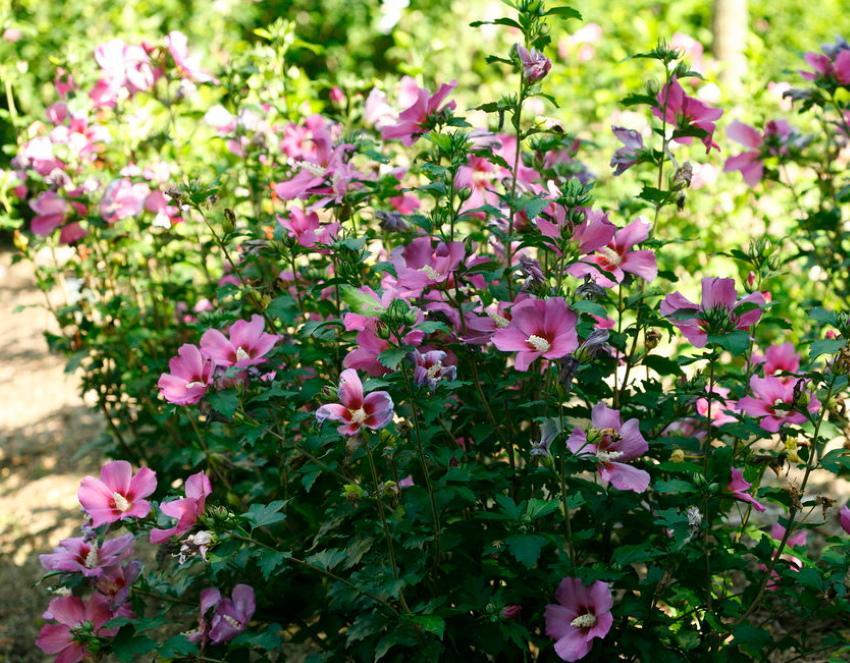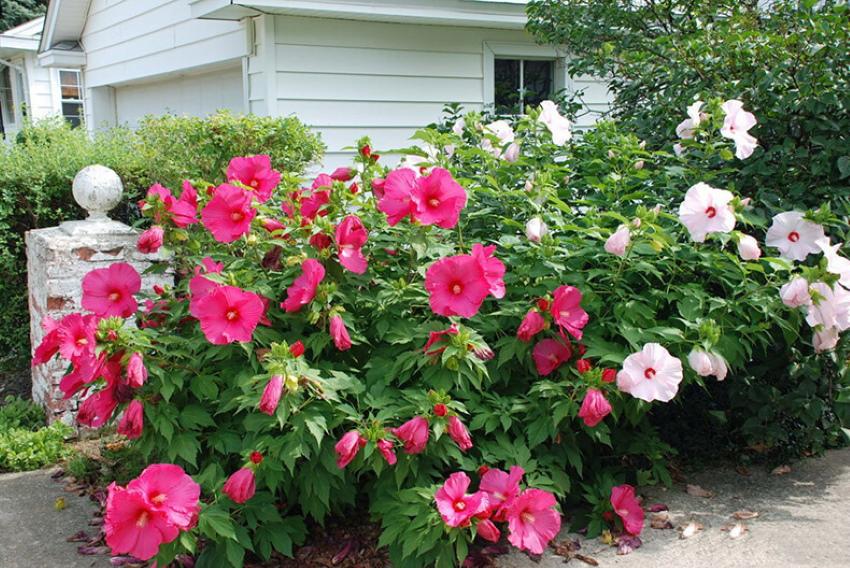Growing garden hibiscus - secrets of abundant flowering
 Did you know that mallow can grow as a bush or even a tree? But in this case, it is already a separate culture, known as hibiscus from the mallow family. Growing a garden hibiscus is not much more difficult than its indoor sibling. There are some features, but even gardening enthusiasts can handle them. The main thing is to know what species grows on your site.
Did you know that mallow can grow as a bush or even a tree? But in this case, it is already a separate culture, known as hibiscus from the mallow family. Growing a garden hibiscus is not much more difficult than its indoor sibling. There are some features, but even gardening enthusiasts can handle them. The main thing is to know what species grows on your site.
Types of hibiscus for planting in the open field
Most hibiscus naturally live in warm tropical climates. Taking into account the Russian winters, they can survive only as indoor plants, for example, like a Chinese rose. But thanks to the work of breeders, several hybrid varieties with increased frost resistance have been bred. They have long been successfully used for landscaping city parks or on private plots.
Among the species that can be planted in the garden, hibiscus has taken root well in temperate climates:
- Syrian (known as treelike) is a lush deciduous bush up to 2 m high with large flowers (simple or double).

- Garden - a herbaceous hybrid of holly, pink and red hibiscus with very large flowers.

- Triplet (aka northern) is a medicinal annual with small yellowish flowers.

- Herbaceous - a fairly tall shrub up to 3 m in height with large leaves and upright strong stems. Can be perennial or annual.

- Marsh is a hardy shrub with red or pink flowers.

All varieties are often referred to simply as garden hibiscus, and the most popular among them is the Syrian hibiscus.
Growing garden hibiscus - the main nuances of caring for a tree
 Regardless of the species, the crop prefers a well-lit area and fertile soil. But the plant will not forgive excess moisture and may even die. Hibiscus also does not like drafts, which should be considered when choosing a planting site. It is better to plant in spring, so that the bush has time to get stronger by winter.
Regardless of the species, the crop prefers a well-lit area and fertile soil. But the plant will not forgive excess moisture and may even die. Hibiscus also does not like drafts, which should be considered when choosing a planting site. It is better to plant in spring, so that the bush has time to get stronger by winter.
Simple-flowered varieties overwinter better than double hibiscus.
Caring for the plant consists in watering after the soil dries out and feeding. In summer, fertilizers containing nitrogen and phosphorus should be applied (twice a month). With the onset of autumn, you should switch to potash top dressing to prepare the bush for wintering.
If you have herbaceous hibiscus, then they are in the forming pruning dont need. It is enough just to cut off the faded inflorescences, and cut off the shoots that have died out for the winter. Treelike varieties, including the Syrian, are recommended to be cut in the spring, shortening the branches by 1/3. First of all, it is necessary to increase the number of flower buds that are laid on young growth. In addition, the tree can be given any shape, and it is also worth cutting out the root shoots.
As for wintering, in the southern regions, hibiscus can survive it without shelter.In the middle lane, only some varieties will survive in this form, while the rest are recommended to be covered.